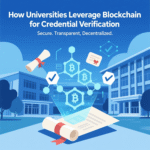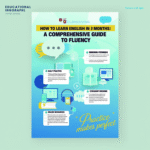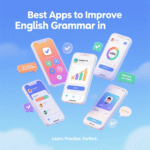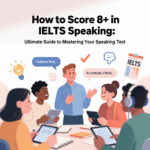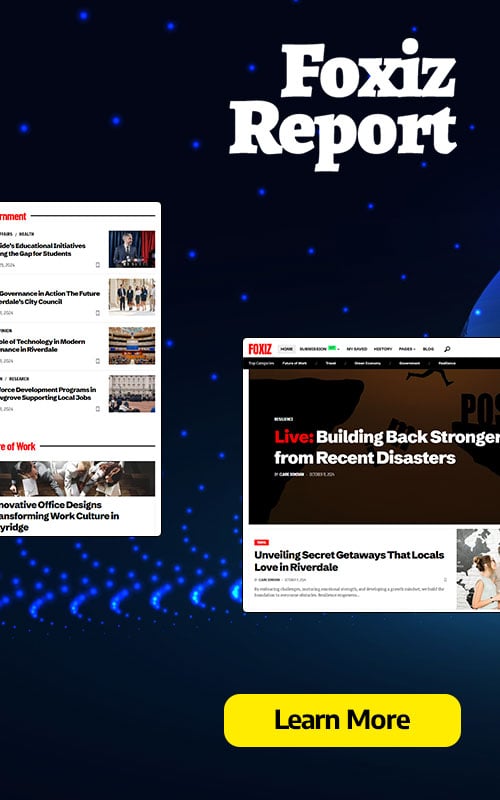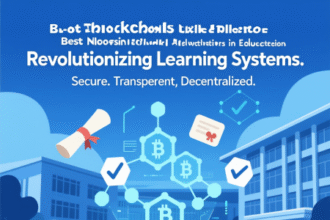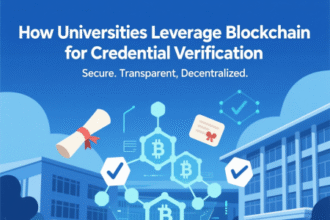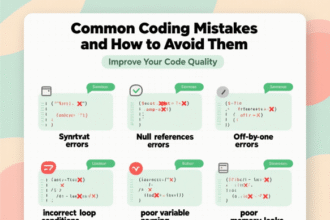The integration of blockchain technology into global education systems is poised to redefine how learning is delivered, verified, and accessed. As education evolves to meet the demands of a digital, interconnected world, blockchain offers innovative solutions to longstanding challenges such as credential fraud, accessibility, and administrative inefficiencies. This transformative technology, characterized by its decentralized, transparent, and secure nature, is reshaping the educational landscape by fostering trust, enhancing efficiency, and empowering learners globally. Below, we explore the profound impact of blockchain in global education, its applications, benefits, challenges, and future potential in creating a more equitable and accessible learning ecosystem.
- Understanding Blockchain Technology in Education
- Key Applications of Blockchain in Education
- 1. Secure Credentialing and Digital Diplomas
- 2. Lifelong Learning and Micro-Credentials
- 3. Decentralized Learning Platforms
- 4. Student Data Privacy and Ownership
- 5. Transparent Funding and Financial Aid
- Benefits of Blockchain in Global Education
- Enhanced Security and Trust
- Cost Efficiency and Scalability
- Global Accessibility and Inclusion
- Interoperability and Portability
- Empowering Learners
- Challenges of Implementing Blockchain in Education
- Case Studies: Blockchain in Action
- MIT’s Blockcerts Initiative
- University of Nicosia’s Blockchain Degrees
- Woolf University: A Decentralized Model
- The Role of Blockchain in Addressing Global Education Challenges
- The Future Potential of Blockchain in Education
- Integration with Artificial Intelligence
- Expansion of Decentralized Credentials
- Blockchain for Open Educational Resources
- Empowering Educators
- Recommendations for Stakeholders
- FAQs About Blockchain in Global Education
Understanding Blockchain Technology in Education
Blockchain is a decentralized digital ledger that records transactions across multiple computers, ensuring data integrity and security. In education, blockchain serves as a robust framework for storing and sharing academic records, certifications, and learning data. Unlike traditional systems that rely on centralized authorities, blockchain’s distributed nature eliminates single points of failure, reduces costs, and enhances transparency. By leveraging cryptographic techniques, blockchain ensures that educational records are tamper-proof, verifiable, and accessible only to authorized parties.
The adoption of blockchain in global education addresses critical pain points, including credential fraud, inefficient administrative processes, and barriers to access for underserved populations. From issuing digital diplomas to enabling lifelong learning portfolios, blockchain’s applications are vast and transformative. Educational institutions, governments, and private organizations are increasingly exploring blockchain to create secure, scalable, and inclusive systems that empower learners and educators alike.
Key Applications of Blockchain in Education
Blockchain’s versatility enables a wide range of applications in education, each addressing specific challenges and unlocking new opportunities. Below, we outline the most impactful use cases of blockchain in global education.
1. Secure Credentialing and Digital Diplomas
One of the most significant applications of blockchain is the issuance of secure, verifiable credentials. Traditional paper-based diplomas and certificates are susceptible to fraud, loss, or damage. Blockchain-based credentials, stored as digital records on a decentralized ledger, are immutable and easily verifiable by employers, institutions, or other stakeholders.
- Tamper-proof records: Blockchain ensures that academic credentials cannot be altered or falsified, reducing fraud.
- Instant verification: Employers and institutions can verify credentials in real-time without intermediaries.
- Global accessibility: Learners can share their credentials with stakeholders worldwide, streamlining processes like job applications or university admissions.
- Cost efficiency: Digital credentials eliminate the need for physical documents, reducing administrative costs.
For example, institutions like MIT and the University of Nicosia have pioneered blockchain-based diplomas, allowing graduates to share verified credentials with employers instantly. This system enhances trust and simplifies the hiring process, particularly in industries where credential verification is critical.
2. Lifelong Learning and Micro-Credentials
The rise of lifelong learning and micro-credentials reflects the need for continuous skill development in a rapidly changing job market. Blockchain enables learners to create digital portfolios that track their educational achievements, including micro-credentials, certifications, and informal learning experiences.
- Comprehensive learning records: Blockchain stores all learning activities, from formal degrees to online courses, in a single, secure portfolio.
- Interoperability: Learners can share their portfolios across institutions and platforms, ensuring portability.
- Personalized learning paths: Blockchain facilitates tailored education plans by tracking progress and recommending relevant courses.
Platforms like Blockcerts and Learning Machine are leading the charge in creating blockchain-based systems for lifelong learning, empowering individuals to showcase their skills and achievements seamlessly.
3. Decentralized Learning Platforms
Blockchain enables the development of decentralized learning platforms that democratize access to education. These platforms eliminate reliance on centralized institutions, allowing learners to access courses, resources, and assessments from anywhere in the world.
- Peer-to-peer learning: Blockchain facilitates direct interactions between learners and educators, reducing costs and barriers.
- Global access: Decentralized platforms enable underserved populations to access quality education without geographic or financial constraints.
- Smart contracts: Automated agreements on blockchain streamline course enrollment, payment, and certification processes.
For instance, platforms like ODEM and BitDegree leverage blockchain to connect learners with educators, offering affordable, high-quality courses while ensuring transparent transactions.
4. Student Data Privacy and Ownership
Data privacy is a growing concern in education, where sensitive student information is often stored in vulnerable centralized systems. Blockchain empowers students to own and control their data, ensuring privacy and security.
- Self-sovereign identity: Students can manage their digital identities and decide who accesses their data.
- Secure data sharing: Blockchain enables selective sharing of information, such as grades or transcripts, with authorized parties.
- Compliance with regulations: Blockchain aligns with data protection laws like GDPR, ensuring compliance while maintaining transparency.
By giving students control over their data, blockchain fosters trust and protects against unauthorized access or data breaches.
5. Transparent Funding and Financial Aid
Blockchain streamlines the allocation and tracking of educational funding, including scholarships, grants, and student loans. Smart contracts automate fund distribution, ensuring transparency and accountability.
- Traceable transactions: Blockchain records every transaction, preventing misuse of funds.
- Reduced administrative costs: Automation eliminates intermediaries, lowering processing fees.
- Equitable distribution: Transparent systems ensure funds reach deserving students, particularly in underserved regions.
For example, blockchain-based platforms like Alice are being used to manage charitable donations for education, ensuring funds are used as intended.
Benefits of Blockchain in Global Education
The integration of blockchain into education offers numerous benefits that address inefficiencies, enhance accessibility, and promote equity. Below, we explore the key advantages in detail.
Enhanced Security and Trust
Blockchain’s cryptographic protocols ensure that educational records are secure and tamper-proof. This eliminates the risk of credential fraud, which costs institutions and employers billions annually. By providing a transparent and verifiable system, blockchain builds trust among stakeholders, including students, educators, and employers.
Cost Efficiency and Scalability
Traditional education systems rely on manual processes for record-keeping, verification, and administration, which are costly and time-consuming. Blockchain automates these processes, reducing administrative overhead and enabling institutions to scale their operations. For example, issuing digital credentials on blockchain eliminates the need for physical documents, saving time and resources.
Global Accessibility and Inclusion
Blockchain enables education systems to reach underserved populations, including those in remote or economically disadvantaged areas. By decentralizing access to learning resources and credentials, blockchain ensures that individuals from diverse backgrounds can participate in the global economy. This is particularly impactful in developing countries, where access to quality education is often limited.
Interoperability and Portability
Blockchain’s standardized protocols enable seamless data sharing across institutions and borders. Students can transfer credits, share credentials, or access learning resources without bureaucratic delays. This interoperability fosters a more flexible and interconnected education ecosystem, supporting lifelong learning and career mobility.
Empowering Learners
By giving students ownership of their data and credentials, blockchain empowers them to take control of their educational journeys. Learners can curate personalized learning paths, showcase their achievements, and pursue opportunities that align with their goals. This shift from institution-centric to learner-centric education is a hallmark of blockchain’s transformative potential.
Challenges of Implementing Blockchain in Education
While blockchain holds immense promise, its adoption in education faces several challenges that must be addressed to ensure widespread implementation.
Technical Complexity
Blockchain technology requires significant technical expertise to implement and maintain. Educational institutions, particularly those with limited resources, may struggle to adopt blockchain due to high initial costs and the need for specialized skills.
- Solution: Partnerships with blockchain providers and investment in training can bridge the technical gap.
- Example: Initiatives like IBM’s Blockchain for Education provide ready-to-use solutions for institutions.
Scalability Issues
Current blockchain networks, such as Ethereum, face scalability limitations, including slow transaction speeds and high energy consumption. These issues can hinder the adoption of blockchain in large-scale education systems.
- Solution: Emerging blockchain protocols, such as layer-2 solutions and energy-efficient consensus mechanisms, are addressing scalability concerns.
- Example: Platforms like Polygon and Solana offer scalable blockchain solutions suitable for educational applications.
Regulatory and Legal Barriers
The lack of standardized regulations for blockchain in education creates uncertainty for institutions and governments. Issues like data privacy, cross-border credential recognition, and compliance with local laws must be addressed.
- Solution: Collaboration between governments, institutions, and blockchain developers can establish clear regulatory frameworks.
- Example: The European Union’s Blockchain Observatory is working to create guidelines for blockchain adoption in education.
Resistance to Change
Educational institutions are often slow to adopt new technologies due to entrenched systems, bureaucratic processes, and cultural resistance. Convincing stakeholders to embrace blockchain requires demonstrating its value and addressing concerns about disruption.
- Solution: Pilot programs and case studies showcasing successful blockchain implementations can build confidence among stakeholders.
- Example: The University of Bahrain’s blockchain-based credentialing system serves as a model for other institutions.
Case Studies: Blockchain in Action
To illustrate the real-world impact of blockchain in global education, we examine several successful implementations.
MIT’s Blockcerts Initiative
The Massachusetts Institute of Technology (MIT) partnered with Learning Machine to develop Blockcerts, an open-standard platform for issuing and verifying blockchain-based credentials. Graduates receive digital diplomas that are cryptographically signed and verifiable, reducing fraud and streamlining verification processes. The initiative has inspired other institutions to explore blockchain for credentialing.
University of Nicosia’s Blockchain Degrees
The University of Nicosia in Cyprus was among the first to issue academic degrees on a blockchain. By storing credentials on the Bitcoin blockchain, the university ensures their authenticity and accessibility. This approach has simplified credential verification for employers and enabled graduates to share their achievements globally.
Woolf University: A Decentralized Model
Woolf University, a blockchain-based higher education platform, connects students with educators through smart contracts. By eliminating traditional administrative structures, Woolf reduces costs and increases access to quality education. The platform demonstrates how blockchain can create decentralized, learner-centric education systems.
The Role of Blockchain in Addressing Global Education Challenges
Blockchain has the potential to address some of the most pressing challenges in global education, from access disparities to administrative inefficiencies.
Bridging the Education Gap
Globally, over 260 million children lack access to education due to poverty, conflict, or geographic isolation. Blockchain-based platforms can deliver affordable, high-quality education to underserved populations by leveraging decentralized systems and low-cost digital infrastructure.
- Example: BitDegree’s blockchain platform offers free and low-cost courses to learners in developing countries, empowering them with marketable skills.
Reducing Credential Fraud
Credential fraud undermines trust in education systems and costs employers billions in verification efforts. Blockchain’s immutable ledger ensures that credentials are authentic, reducing fraud and enhancing trust.
- Example: The Maldives National University uses blockchain to issue verifiable certificates, ensuring their integrity in a region prone to document fraud.
Streamlining Administrative Processes
Administrative tasks, such as student enrollment, transcript issuance, and financial aid distribution, are often labor-intensive and error-prone. Blockchain automates these processes, saving time and resources.
- Example: Sony Global Education’s blockchain platform streamlines student assessments and record-keeping, improving efficiency for schools worldwide.
The Future Potential of Blockchain in Education
As blockchain technology matures, its potential to transform education grows exponentially. Below, we explore emerging trends and future possibilities.
Integration with Artificial Intelligence
The convergence of blockchain and artificial intelligence (AI) could revolutionize personalized learning. Blockchain can securely store learner data, while AI analyzes this data to recommend tailored courses, resources, and career paths.
- Example: AI-driven platforms like Coursera could integrate blockchain to create secure, personalized learning portfolios for students.
Expansion of Decentralized Credentials
As more institutions adopt blockchain-based credentials, a global standard for digital diplomas and micro-credentials could emerge. This would enable seamless credit transfer, recognition of informal learning, and enhanced career mobility.
- Example: The European Blockchain Partnership is developing a framework for cross-border credential recognition, fostering a unified education ecosystem.
Blockchain for Open Educational Resources
Blockchain can facilitate the creation and distribution of open educational resources (OER), ensuring that high-quality materials are freely accessible while protecting intellectual property.
- Example: Platforms like Knowledge.io use blockchain to incentivize content creators while providing free access to learners.
Empowering Educators
Blockchain can enable educators to monetize their expertise through decentralized platforms, creating new revenue streams and fostering innovation in teaching methods.
- Example: TeachMePlease uses blockchain to connect educators with students, allowing teachers to set their own rates and terms.
Recommendations for Stakeholders
To fully harness the potential of blockchain in global education, stakeholders must take proactive steps to overcome challenges and drive adoption.
- Educational Institutions: Invest in blockchain pilot programs to test applications like credentialing and data management. Partner with technology providers to build scalable solutions.
- Governments: Develop regulatory frameworks to support blockchain adoption while ensuring data privacy and compliance with international standards.
- Technology Providers: Create user-friendly blockchain platforms tailored to the needs of educational institutions, with a focus on scalability and affordability.
- Students and Educators: Advocate for blockchain adoption to enhance transparency, accessibility, and control over educational data.
- Private Sector: Collaborate with institutions to integrate blockchain-based credentials into hiring processes, fostering trust and efficiency.
FAQs About Blockchain in Global Education
- What is blockchain in education? Blockchain in education refers to the use of decentralized ledger technology to store, verify, and share educational data, such as credentials, student records, and learning resources.
- How does blockchain prevent credential fraud? Blockchain creates tamper-proof records that are cryptographically signed, ensuring credentials cannot be altered or falsified.
- Can blockchain improve access to education? Yes, blockchain enables decentralized learning platforms that provide affordable, high-quality education to underserved populations.
- What are blockchain-based credentials? Blockchain-based credentials are digital diplomas or certificates stored on a blockchain, making them secure, verifiable, and portable.
- How does blockchain enhance student data privacy? Blockchain allows students to control their data through self-sovereign identities, ensuring only authorized parties access their information.
- What are the challenges of adopting blockchain in education? Challenges include technical complexity, scalability issues, regulatory barriers, and resistance to change from institutions.
- How can blockchain reduce administrative costs? Blockchain automates processes like credential issuance, verification, and financial aid distribution, reducing manual labor and costs.
- What is a decentralized learning platform? A decentralized learning platform uses blockchain to connect learners and educators directly, eliminating intermediaries and reducing costs.
- How does blockchain support lifelong learning? Blockchain creates digital portfolios that track all learning activities, enabling learners to showcase their skills and achievements over time.
- What institutions are using blockchain in education? Institutions like MIT, the University of Nicosia, and the Maldives National University have implemented blockchain for credentialing and data management.
- Can blockchain improve funding transparency? Yes, blockchain’s transparent ledger ensures that educational funds, such as scholarships, are allocated and used as intended.
- How does blockchain integrate with AI in education? Blockchain securely stores learner data, while AI analyzes it to provide personalized learning recommendations and career guidance.
- What is the role of smart contracts in education? Smart contracts automate processes like course enrollment, payment, and certification, improving efficiency and transparency.
- How can blockchain support open educational resources? Blockchain ensures secure distribution of OER while protecting intellectual property and incentivizing content creators.
- What is the future of blockchain in education? The future includes global credential standards, AI integration, decentralized platforms, and expanded access to education worldwide.




